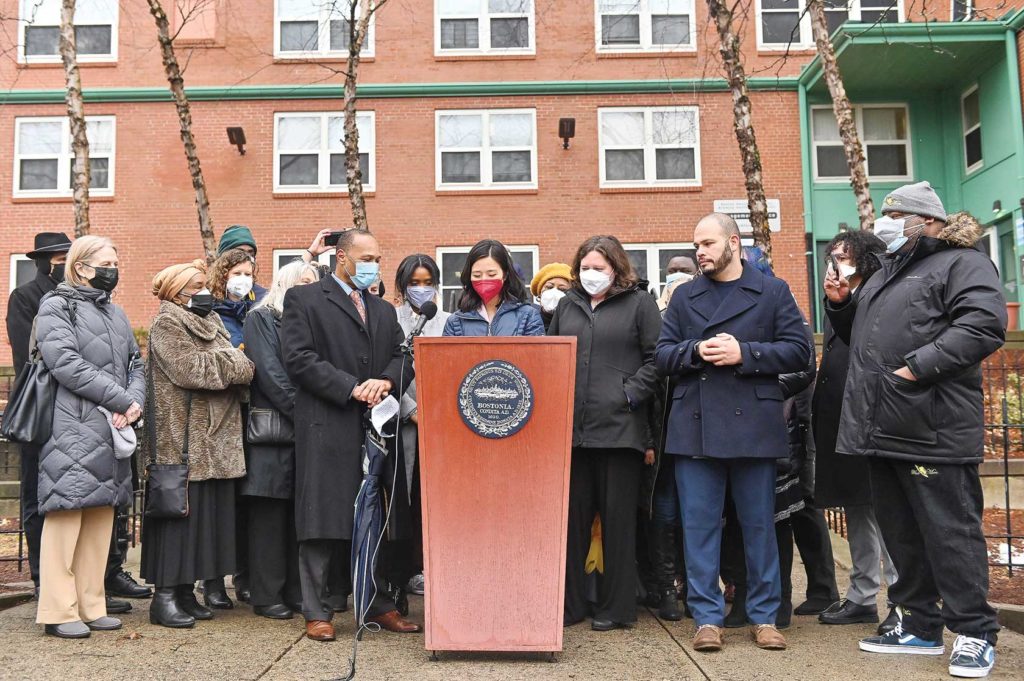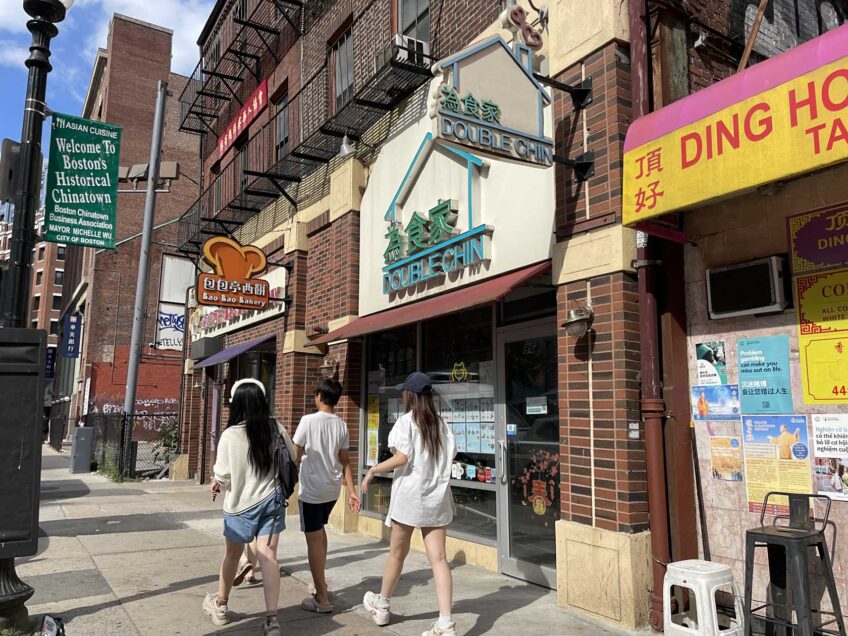Fair housing rule seen as way to fight displacement
Executive order puts focus on city’s segregated housing patterns

Mayor Michelle Wu has signed into law an executive order that provides a legal framework that could compel developers to increase production of housing using fair housing law.
During an announcement last Thursday of the city’s $50 million investment into renovations at the Mildred C. Hailey Apartments in Jamaica Plain, Wu signed the Executive Order Relative to Affirmatively Furthering Fair Housing (AFFH), making Boston the largest U.S. city to have such a law on its books.
The AFFH has its roots in the federal Fair Housing Act, which prohibits discrimination based on race. More specifically, the concept draws from more recent interpretations of the law, including a directive by the Obama administration that required the federal government to provide redress for historical discrimination in housing in addition to ensuring equitable access to housing.
Under Wu’s AFH order, real estate development projects can be evaluated by the city to assess whether they are contributing to or lessening housing segregation in Boston. Because Blacks, Latinos and many Asians generally have lower incomes and less family wealth than whites, the high cost of market-rate housing in Boston could in itself be interpreted as contributing to discrimination.
Because AFH now governs the city’s zoning code, it could disrupt longstanding patterns such as the developer-driven buildout of the Seaport area that produced a neighborhood that is 81% white in a city that is majority people of color.
“This is a major change relative to how development is done in Boston,” said Dwaign Tyndal, executive director of Alternatives for Community and Environment and a member of a committee that helped draft the AFH order.
During the Obama administration, the U.S. Department of Housing and Urban Development (HUD) instituted a rule requiring cities that receive HUD funding to conduct an analysis of fair housing in the city every five years, documenting the barriers to housing being desegregated and the city’s efforts to remedy segregation.
The Obama administration rule directs municipal authorities to take proactive steps to remedy harm caused by past discriminatory housing practices.
“It means taking steps proactively to address significant disparities in access to community assets, to overcome segregated living patterns and support and promote integrated communities, to end racially and ethnically concentrated areas of poverty, and to foster and maintain compliance with civil rights and fair housing laws,” the rule reads.
Tyndal said of the Boston AFH rule, “This is a contract between the City of Boston and HUD saying, ‘We’re not going to resegregate the city.’”
City Councilor Kenzie Bok, on hand at the signing last Thursday, said the AFH order demands that the city be active in remediating past discrimination.
“It really gives the city a standard to meet across city operations, across the board, going beyond just ‘not discriminating’ to actively trying to repair some of the harms that have been done through housing discrimination,” she said. “In this order, what the city does is bring that federal level of aspiration and commitment to the ground in a series of real departmental directives, whether you’re talking about the [Boston Housing Authority] or the way the Office of Housing operates.”
Former Tufts University Professor James Jennings, who worked with the community advisory committee on the new policy, said the city’s approach will bake fair housing law into its zoning codes, thanks in part to a 2021 ordinance advanced by then-District 1 City Councilor Lydia Edwards.
“This is the first time in Boston history where the zoning code is combined with fair housing,” Jennings said.
To what extent real estate developers could be held to the city’s fair housing standards remains an open question. Major projects with minimal affordable housing, such as the redevelopment of Suffolk Downs, are already in various stages of planning and development. Tyndal said the AFH is a tool community members can use to increase affordability in projects that would otherwise contribute to segregation.
“If we use it correctly, we can push back on those kinds of developments in the future,” he said. “But if we don’t use it, it doesn’t work.”
Officials in the administration of former Mayor Martin Walsh began planning in 2017 to implement the Obama administration rule, forming a community advisory committee to assess the impediments to fair housing in Boston and what goals could overcome the impediments. More than 500 Bostonians participated in meetings organized by the community advisory committee.
Under Wu’s AFH order, the city’s chief of equity and inclusion will work with the city’s Office of Fair Housing and Equity to hold city departments accountable and ensure compliance, according to a press release from the Wu administration.
Bok said the new directive could be the key to stemming displacement in Boston.
“It is the only way we can keep low-income people in neighborhoods like Jamaica Plain,” she said. “It is the only way we can keep low-income people in the city.”







